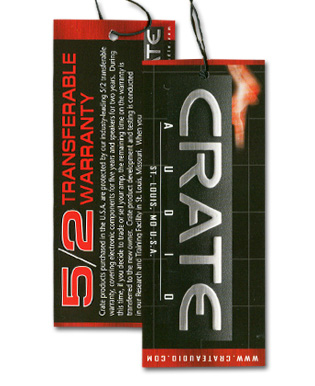Creating the right tag, whether it be a custom die cut hang tag or multipart inventory tag, can be difficult.
Next, you need to choose a material for both the tag and fastening device. When choosing these materials, there are a few questions to answer. Is it for industrial or merchandise use? Does it need to be weather resistant? How durable should the tag be? There are numerous papers, synthetics, and plastics that can be used as well as carbon and carbonless paper tags for industrial applications. Similarly, fastening materials range from basic cotton string and wire to elastics and decorative twine. Elastic strings are popular with many consumer products due to their ease of assembly while industrial applications often require more durable materials. Color choice is important aspect of tag design because the right color could make or break a tag. For instance, a color too dull might not draw the right attention; or lettering too light might be hard to see. The most common colors for industrial tags are white and manila because dark inks show up better on them and they are the least expensive to produce. Most tags for consumer goods utilize multi-color or process printing to achieve graphics that draw the consumer’s eye. Choosing a hole size and reinforcement material is easy because options are usually somewhat limited. Standard hole sizes for most industrial tags are 3/16” and 3/8” and there are a variety of reinforcement materials available: fiber patch, eyelet, reinforced eyelet, and Mylar stripped reinforced. Consumer tags can often be made with a larger variety of hole sizes since reinforcements are not required. For more on designing custom printed tags, please visit St. Louis Tag. They offer a step-by-step guide on choosing the right size, material, color, hole size and reinforcement material, attachment, and printing method. |
 The first step is choosing the proper tag size for your needs so you must consider how the tag will integrate with the package and how much content needs to be printed on the tag. For tags requiring a lot of text, folding tags are often an option. If you want the tag to stand out on a store shelf or in warehouse racking, you may consider a larger size or a custom shape that draws attention to the product.
The first step is choosing the proper tag size for your needs so you must consider how the tag will integrate with the package and how much content needs to be printed on the tag. For tags requiring a lot of text, folding tags are often an option. If you want the tag to stand out on a store shelf or in warehouse racking, you may consider a larger size or a custom shape that draws attention to the product.